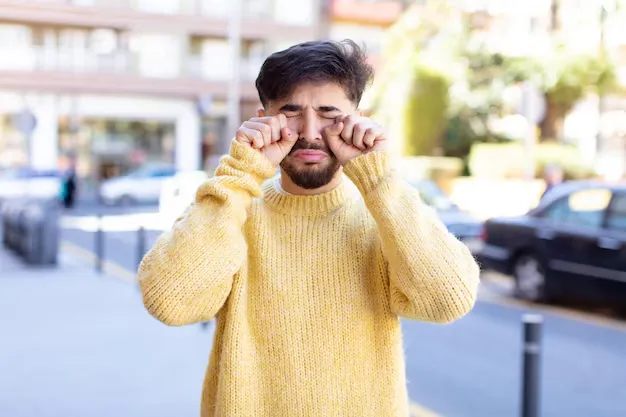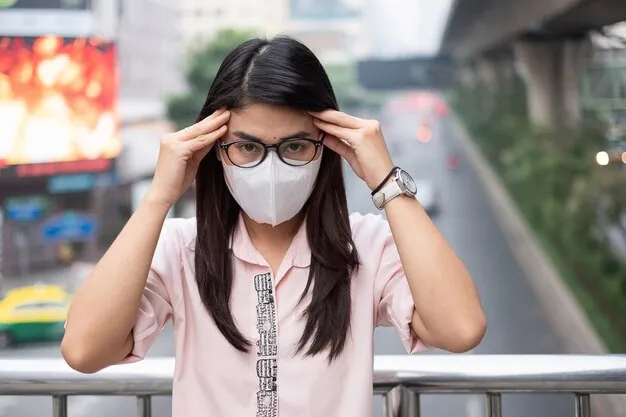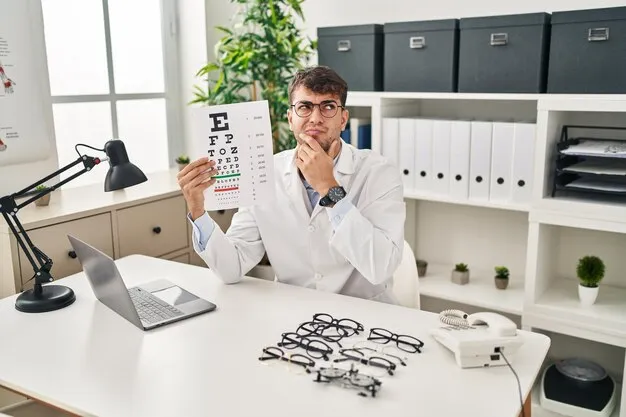Eye Health
Protecting Your Eyes from Air Pollution and Irritants
FSDAVCFEBFEVSDDVFSD
FSDAVCFEBFEVSDDVFSD
FSDAVCFEBFEVSDDVFSD
How Air Pollution Affects Your Eyes
Air pollution and environmental irritants can have a significant impact on eye health, leading to discomfort, dryness, and long-term complications. Particulate matter, smoke, and chemicals in the air can disrupt the tear film, which is essential for maintaining clear vision and preventing irritation. When pollutants come into contact with the eyes, they can cause symptoms like redness, burning, and excessive watering.
Long-term exposure to poor air quality increases the risk of developing dry eye syndrome, a condition where the eyes do not produce enough quality tears for proper lubrication. Individuals who wear contact lenses or spend long hours outdoors may experience even greater discomfort. Taking proactive measures to shield your eyes from pollutants is crucial for maintaining overall eye health.
Air pollution and environmental irritants can have a significant impact on eye health, leading to discomfort, dryness, and long-term complications. Particulate matter, smoke, and chemicals in the air can disrupt the tear film, which is essential for maintaining clear vision and preventing irritation. When pollutants come into contact with the eyes, they can cause symptoms like redness, burning, and excessive watering.

Long-term exposure to poor air quality increases the risk of developing dry eye syndrome, a condition where the eyes do not produce enough quality tears for proper lubrication. Individuals who wear contact lenses or spend long hours outdoors may experience even greater discomfort. Taking proactive measures to shield your eyes from pollutants is crucial for maintaining overall eye health.

Common Environmental Eye Irritants
Environmental factors beyond air pollution significantly contribute to eye irritation and discomfort. Allergens such as pollen, dust, and mold are common culprits, often triggering inflammation and allergic conjunctivitis. Windy conditions and dry air, especially in urban areas with high pollution levels, exacerbate symptoms by speeding up tear evaporation, leaving the eyes feeling dry and irritated.
Additionally, exposure to chemicals from household cleaning products, wildfire smoke, and industrial pollutants can aggravate eye discomfort. People in poorly ventilated or heavily trafficked urban centers are more likely to experience burning or gritty sensations due to the accumulation of airborne particles and reduced air quality. These conditions can lead to chronic discomfort if not addressed promptly.
Protecting against these environmental irritants involves proactive measures. Maintaining a clean indoor environment and using air purifiers can significantly reduce allergen exposure. Monitoring outdoor conditions and limiting time spent outside during high pollution or allergen levels can also help. Staying hydrated, practicing proper eye care, and using lubricating eye drops as needed are essential strategies to minimize symptoms. By addressing environmental factors, individuals can better safeguard their eye health and reduce the impact of irritants on daily life.
Signs of Eye Irritation from Pollution

Eye irritation from environmental factors can appear in various forms, influenced by the severity and duration of exposure. Common symptoms include redness and inflammation, where the eyes may look bloodshot or swollen due to exposure to irritants like dust, pollen, or pollution. Dryness and discomfort are also prevalent, as pollutants disrupt the tear film, leading to a scratchy or gritty sensation in the eyes. In some cases, the eyes may produce excessive tears as a defense mechanism to flush out irritants.

Additionally, temporary blurred vision can occur when pollutants coat the eye's surface, interfering with visual clarity. While mild symptoms often resolve with basic remedies such as artificial tears or avoiding irritants, persistent or severe symptoms may indicate a more serious issue. Seeking advice from an eye care professional can help identify the underlying cause and provide effective treatment to maintain long-term eye health.
If eye irritation symptoms persist or worsen, consulting an eye care professional is crucial for proper diagnosis and treatment. Persistent redness, dryness, or blurry vision could indicate an underlying condition, such as chronic dry eye syndrome, allergic conjunctivitis, or even early signs of more severe issues. Over-the-counter remedies may provide temporary relief, but they may not address the root cause of the problem. A comprehensive eye exam can help pinpoint specific triggers, evaluate the health of your tear film, and determine the best course of action for lasting relief.
Eye care professionals can offer tailored solutions, such as prescription eye drops, advanced therapies, or lifestyle recommendations to minimize exposure to irritants. They can also guide you in adopting preventive measures like using protective eyewear, humidifiers, or air purifiers to reduce symptoms caused by environmental factors. Early intervention is key to preventing long-term complications and maintaining healthy, comfortable vision. Regular follow-ups ensure that your eye health stays on track, providing peace of mind and improved quality of life.
How to Protect Your Eyes from Irritants
Minimizing exposure to air pollution and environmental irritants is essential for maintaining eye health and reducing discomfort. Protective eyewear, such as sunglasses with UV protection, can shield your eyes from harmful pollutants, wind, and sunlight, reducing irritation. Artificial tears are another effective solution, as they keep your eyes moist and help flush out any irritants that may accumulate. Staying well-hydrated is equally important, as it supports healthy tear production and prevents dryness.
In addition to personal care, taking steps to improve your environment can further protect your eyes. Limit time outdoors during high-pollution days and avoid heavily trafficked areas to reduce exposure to harmful particles. Indoors, maintain clean air quality by using air purifiers to filter out allergens and pollutants and humidifiers to prevent dry air from aggravating your eyes. By adopting these strategies, you can safeguard your vision and ensure long-term eye comfort in challenging environmental conditions.
Long-Term Effects of Air Pollution on Eye Health
Chronic exposure to air pollution can have long-term effects on eye health, extending beyond temporary irritation. Research indicates that prolonged contact with pollutants like nitrogen dioxide and fine particulate matter may increase the risk of ocular surface diseases, including chronic dry eye syndrome and cataracts. These pollutants compromise the tear film’s protective layers, making the eyes more vulnerable to damage.
Additionally, UV radiation exposure, combined with environmental pollutants, can accelerate age-related macular degeneration (AMD), posing a significant threat to long-term vision health.
Chronic exposure to air pollution can have long-term effects on eye health, extending beyond temporary irritation. Research indicates that prolonged contact with pollutants like nitrogen dioxide and fine particulate matter may increase the risk of ocular surface diseases, including chronic dry eye syndrome and cataracts. These pollutants compromise the tear film’s protective layers, making the eyes more vulnerable to damage.
Additionally, UV radiation exposure, combined with environmental pollutants, can accelerate age-related macular degeneration (AMD), posing a significant threat to long-term vision health. The combination of environmental stressors may exacerbate oxidative damage to the delicate structures of the eye, further increasing the risk of vision impairment.


Individuals with pre-existing eye conditions, such as contact lens wearers or those prone to allergic conjunctivitis, should exercise extra caution.
The combination of environmental stressors may exacerbate oxidative damage to the delicate structures of the eye, further increasing the risk of vision impairment. Individuals with pre-existing eye conditions, such as contact lens wearers or those prone to allergic conjunctivitis, should exercise extra caution.
Best Practices for Maintaining Eye Health
Protecting your vision from environmental damage requires proactive steps integrated into your daily routine. Start by checking air quality levels through online resources or mobile apps before heading outdoors. This allows you to plan your activities around periods of high pollution, minimizing your exposure to harmful airborne particles.
Wearing a wide-brimmed hat is another effective measure, as it provides extra protection for your eyes against UV rays and airborne irritants. When paired with sunglasses, it creates a barrier that helps reduce direct exposure to environmental factors that can harm your eyes. Additionally, washing your face and eyelids after spending time outdoors is crucial. This practice removes pollutants, dirt, and allergens, preventing buildup on your skin and in your eyes, which can lead to irritation or discomfort.
Using an air purifier indoors can also help create a cleaner environment by reducing irritants like dust and smoke. Avoiding the habit of rubbing your eyes is equally important. Rubbing not only risks introducing bacteria and pollutants into the eyes but can also exacerbate irritation or existing conditions. Instead, use artificial tears or a clean tissue to relieve discomfort safely. For long-term care, schedule regular comprehensive eye exams. These check-ups are essential for detecting early signs of pollution-related eye issues and addressing them promptly.
By adopting these habits, individuals can significantly reduce their risk of developing vision problems caused by environmental irritants. Proactive eye care not only ensures immediate comfort but also supports long-term vision health, safeguarding your eyes from the harmful effects of pollution and other environmental factors. Protecting your eyes today lays the foundation for clear and healthy vision in the future.
When to Seek Professional Eye Care
If symptoms of eye irritation persist despite preventive measures, it is essential to seek advice from an eye doctor. Persistent dryness that does not respond to artificial tears or home remedies may indicate a more serious issue requiring professional attention. Early intervention can help prevent potential complications and restore eye comfort.


If symptoms of eye irritation persist despite preventive measures, it is essential to seek advice from an eye doctor. Persistent dryness that does not respond to artificial tears or home remedies may indicate a more serious issue requiring professional attention. Early intervention can help prevent potential complications and restore eye comfort.
Warning signs like increased light sensitivity, worsening eye pain, or sudden changes in vision, such as prolonged blurriness or double vision, should never be ignored.
Warning signs like increased light sensitivity, worsening eye pain, or sudden changes in vision, such as prolonged blurriness or double vision, should never be ignored. These symptoms could signal underlying conditions such as dry eye syndrome, allergic conjunctivitis, or even more severe ocular surface diseases that need timely treatment.
An optometrist can evaluate your symptoms, diagnose any underlying issues, and recommend suitable treatment options. These may include prescription eye drops, in-office procedures, or guidance on lifestyle adjustments to reduce exposure to harmful pollutants. Professional care ensures your eyes remain healthy and comfortable over the long term.
These symptoms could signal underlying conditions such as dry eye syndrome, allergic conjunctivitis, or even more severe ocular surface diseases that need timely treatment.
An optometrist can evaluate your symptoms, diagnose any underlying issues, and recommend suitable treatment options. These may include prescription eye drops, in-office procedures, or guidance on lifestyle adjustments to reduce exposure to harmful pollutants. Professional care ensures your eyes remain healthy and comfortable over the long term.
Schedule an Eye Exam for Healthier Vision
Protecting your eyes from environmental irritants begins with proactive care and awareness. Limiting exposure to pollutants, wearing protective eyewear, and maintaining proper hydration are simple yet effective steps to reduce discomfort and preserve eye health. Regularly practicing good eye care habits can help minimize the risk of long-term complications, such as chronic dryness or irritation caused by air pollution.
If you experience persistent eye irritation, dryness, or discomfort, scheduling an eye exam is essential for maintaining clear and healthy vision. Early diagnosis and tailored treatment from an eye care professional can address underlying issues and provide long-term relief. Contact Kleinwood Vision today to discuss your symptoms and explore personalized solutions for protecting your eyes from the effects of air pollution and environmental irritants. Your vision deserves the best care to stay sharp and comfortable for years to come.

Contact Info
Hours of Operation
Mon - Fri | 9:00 AM - 5:00 PM
Sat - Sun | Closed
Holiday Hours: We are closed for the following holidays: New Years Day, Memorial Day, Independence Day, Labor Day, Thanksgiving Day, Christmas Day
© 2025 Kleinwood Vision. All rights Reserved.


